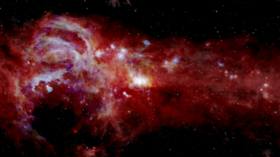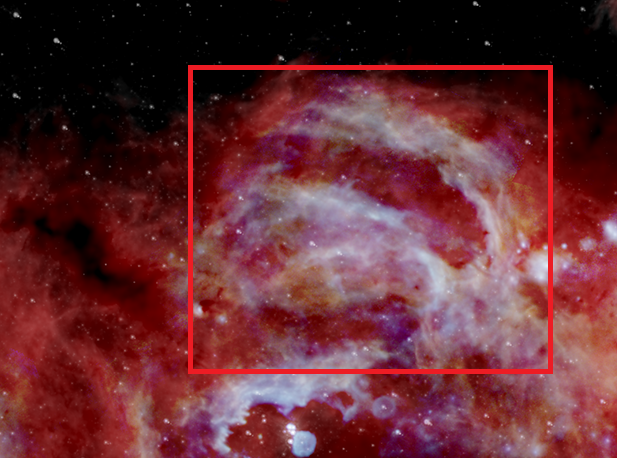Journey to the ‘galactic core’: New infrared NASA images show Milky Way’s center in unprecedented detail (PHOTO)

NASA has caught a glimpse of the farthest inner reaches of the Milky Way galaxy, capturing stunning images that could help scientists understand the chaotic realm of the galactic core, home to a titanic supermassive blackhole.
The breathtaking visuals were created with help from SOFIA, a high-powered airborne telescope fixed to a modified Boeing 747, which cast its infrared gaze 600 light years into the Milky Way. Combining SOFIA’s data with that of other telescopes produced a dazzling composite image of our galaxy’s center.

“It’s incredible to see our galactic center in detail we’ve never seen before,” said James Radomski, a scientist working on the SOFIA project at NASA’s Ames Research Center in California.
Studying this area has been like trying to assemble a puzzle with missing pieces. The SOFIA data fills in some of the holes, putting us significantly closer to having a complete picture.
The Quintuplet Cluster, where stars burn a million times brighter than Earth’s Sun, also clearly emerged in the composite.

The snapshot may help researchers understand what’s holding up the star-formation in the remote region. Though rich with gas, dust, and other space debris, scientists have detected a puzzling lack of massive stars near the galactic center, around 10 times fewer than expected.
“Understanding how massive star birth happens at the center of our own galaxy gives us information that can help us learn about other, more distant galaxies,” said Matthew Hankins, the principal investigator of the project and a postdoctoral scholar at the California Institute of Technology.
Also on rt.com There may be far more black holes wandering space, consuming all in their path, says worrying new researchScientists also have better insight into the supermassive blackhole smack in the center of the Milky Way thanks to the new image, which provides a view of a mysterious 10-light-year-wide ring surrounding the gargantuan void, which continues to baffle researchers.
Collected in July 2019, the new SOFIA data was presented for the first time at an event in Hawaii earlier this week, and has been submitted for publication in the Astrophysical Journal.
Also on rt.com Milky Way soiree: Our galaxy was filled with almost 100k supernovae roughly 1bn years agoThink your friends would be interested? Share this story!













